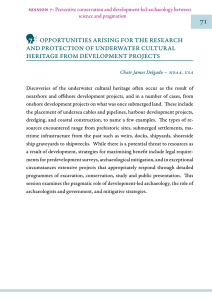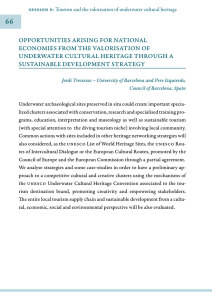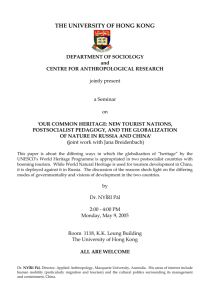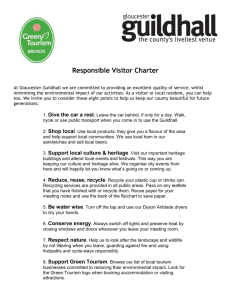67 ThE iMPaCT on and oPPorTuniTiEs arising froM TourisM To suBMErgEd siTEs
advertisement
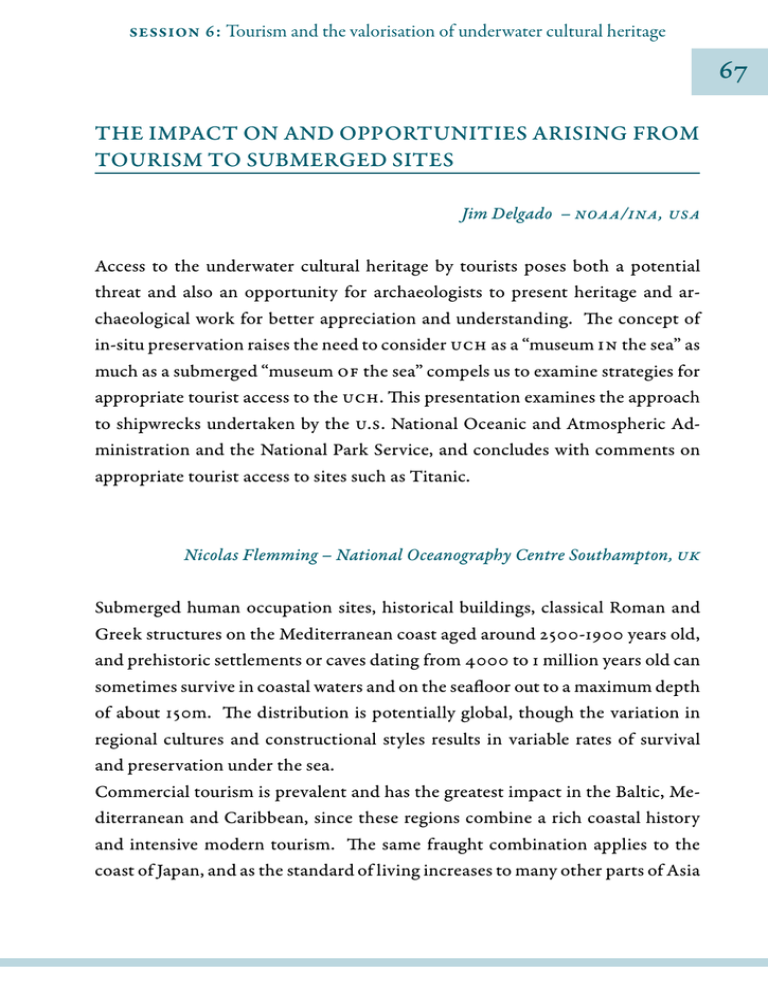
Session 6: Tourism and the valorisation of underwater cultural heritage 67 The impact on and opportunities arising from tourism to submerged sites Jim Delgado – NOAA/INA, USA Access to the underwater cultural heritage by tourists poses both a potential threat and also an opportunity for archaeologists to present heritage and archaeological work for better appreciation and understanding. The concept of in-situ preservation raises the need to consider UCH as a “museum IN the sea” as much as a submerged “museum OF the sea” compels us to examine strategies for appropriate tourist access to the UCH. This presentation examines the approach to shipwrecks undertaken by the U.S. National Oceanic and Atmospheric Administration and the National Park Service, and concludes with comments on appropriate tourist access to sites such as Titanic. Nicolas Flemming – National Oceanography Centre Southampton, UK Submerged human occupation sites, historical buildings, classical Roman and Greek structures on the Mediterranean coast aged around 2500-1900 years old, and prehistoric settlements or caves dating from 4000 to 1 million years old can sometimes survive in coastal waters and on the seafloor out to a maximum depth of about 150m. The distribution is potentially global, though the variation in regional cultures and constructional styles results in variable rates of survival and preservation under the sea. Commercial tourism is prevalent and has the greatest impact in the Baltic, Mediterranean and Caribbean, since these regions combine a rich coastal history and intensive modern tourism. The same fraught combination applies to the coast of Japan, and as the standard of living increases to many other parts of Asia Session 6: Tourism and the valorisation of underwater cultural heritage 68 and South America. The impact arises from the construction of yacht marinas, coastal building of hotels, water sports resorts, touristic scuba diving, and the collection and sale of souvenirs. Examples of threatened sites will be given. There are very few examples of submerged occupation sites which have been studied, protected, and then managed for controlled tourism. Caesarea in Israel is a clear example, and tourist boat organisers and recreational divers are well aware of the submerged Lycian cities on the SW coast of Turkey. The submerged towns near Alexandria have also been considered for touristic exploitation.
